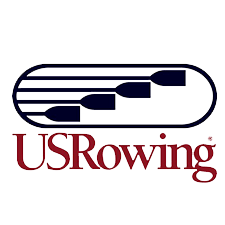Trailer Loading: Rowers Across the Globe Share their Secrets
Top rowing expertise can be difficult to find in the vast sea of the internet – you have to know where to look. Have you tapped into LinkedIn forums yet? They provide a platform of experts (like you) to discuss any rowing challenges on your mind. We found a great thread on trailer loading in the World Rowing Network group. Five rowers tell you exactly how to do it, considering varying country laws.
How do you load your trailer? Add to the discussion.
To connect with rowers across the globe join the World Rowing Network on LinkedIn.
Trailer Loading
Mike Stilwell: Age old question, how to load equipment ; riggers, oars, slings, etc.
I\’ve towed non rowing equipment for a living and I\’ve noticed a great variance in the way folks load a shell trailer. A trailer \”should be\” loaded with the weight load distributed so the weight is over the axles with the maximum weight load on the tongue, every trailer has a different tongue load rating.
I load the oars behind the axles, the riggers in front of axles, and the tool box and heavy equipment bins directly over the axles. Of course I do adjust for the shell load, more fours – less eights, more eights – less fours.
So how do you load your trailer?
Bill Strahan: Obviously loads differ due to the mix of boats loaded. Hitch weight should be maximised – within the rating of the towing vehicle to minimise snaking tendencies under braking. The other key consideration is to use sectional eights on the lower racks with sections forward to maximise clearance between tow vehicle and truck. Where anything goes in the base of the trailer is a matter of preference, so long as the desired hitch weight can be achieved.
Overhang is a legal issue in several countries now, so extendable hitches and lighting boards are common.
All of this is common knowledge to anyone who tows, am I missing something in the question?
Is anyone operating under specific insurance obligations – e.g. anti-snake devices?
Ted Chesnutt: Trailer loading does start with the vehicle that is towing the trailer and then the type brakes on the type & caliber brakes on the trailer.
The next limits will be the structure of the trailer frame and the laws pertaining to trailering in which the trailering will take place….planned travel.
I bring this up for at many regattas, there will be a few that do not think about any of these points before leaving their home venue. I know that some trailers got ticketed going across the U.S a few years back and the drivers of these rigs were experienced at what they were doing.
Mike, it sounds like you have done a solid job with the actual loading of the trailer. I will give you one more \”heads-up\”…check your straps for unusual wear & tear on your straps while you are strapping your shells down and rolling up the straps afterwards. No reason to lose a boat over a frayed strap that does not cost that much.
Carl de Beer: Generally try our very best to load our trailers equally on the left and right sides and then heavier (bigger) boats on the bottom becoming smaller and lighter towards the top of the trailer almost a pyramid effect! I find that in South Africa – where you put your blades/toolboxes/riggers etc is not up to the individual, but rather whoever designed the trailer!
Twan van Duivenbooden • In the Netherlands overhang is an issue: it isn\’t allowed to have front overhang with the trailer and rear overhang is limited to 5 metres measured from the axle. Most clubs therefore do not use a centre axle trailer, but a turntable trailer, with one front axle and one or two rear axles. See links for images. With this type of trailer is doesn\’t really matter where the load is placed, the hitch weight is independent from the load. They are more stable on the road, and because of less overhang shells are more protected. They are a bit trickier to reverse though.
http://www.orbonsaanhangwagens.nl/images/boottrailer%20saurus%20001.jpg
http://www.orbonsaanhangwagens.nl/images/boottrailer%20saurus%20002.jpg




















